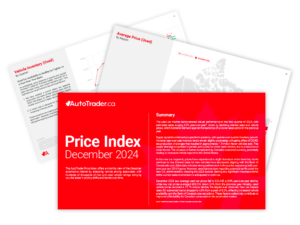Car buyers divide neatly into two camps: those who have purchased before and those who have not (yet). Both groups are looking for the right vehicle at an attractive price, but the experienced car buyer and the first-time car buyer can have completely different ways of approaching their path to purchase. By understanding the nuances in the first-time car buyer’s journey, dealers can make the best use of their resources to step in, when the timing is right, and influence the path towards finalizing a deal.
Newsroom Articles
According to our Vehicle Path to Purchase Study, the primary drivers for experienced buyers to shop for a car are a desire to upgrade or because their current vehicle is dated. With first-time buyers, the main triggers are avoiding public transit (32%) and ridesharing services (21%), or, because they’re in the process of starting or switching jobs (21%). Necessity is as much of a factor as desire, if not more.

Not surprisingly, first-time buyers are more likely to be younger, with lower earnings, on average, as compared to experienced buyers. They are predominantly single or a young couple without children – factors that play a role in their purchase preferences. While the largest segment of experienced buyers have their sights set on a SUV (45%), first-time buyers were more likely to purchase a sedan (38%) , with SUV’s coming in second (34%). Some gravitate towards an electric vehicle (EV), however, the numbers remain slim at 9% for first-time buyers and 6% with experienced buyers. Overall, first-time and experienced buyer segments are near identical with respect to the breakout of their preference for a used or new vehicle.
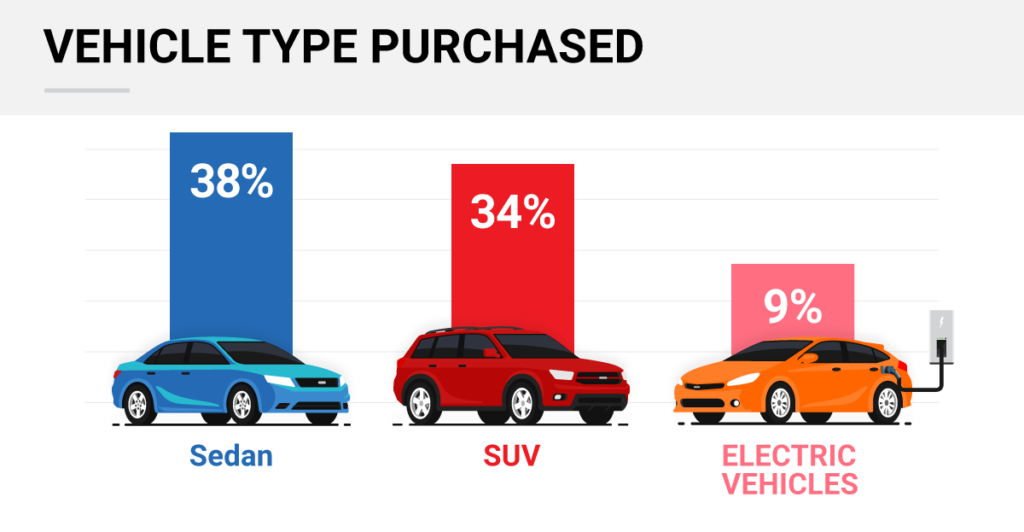
Both segments use the same resources throughout the purchase process, with nearly the same weightings across each of these. At the top are online automotive marketplaces (63%), followed by dealer websites (36%), manufacturer websites (32%), and online videos (23%). Half of both buyer types are equally likely to visit a dealership and test-drive a vehicle, however, only 1 in 10 first-time buyers visit without a test-drive, as compared to 23% of experienced buyers. Those purchasing a car for the first time are also far more likely to ask their friends (44%) or family (45%) for advice.
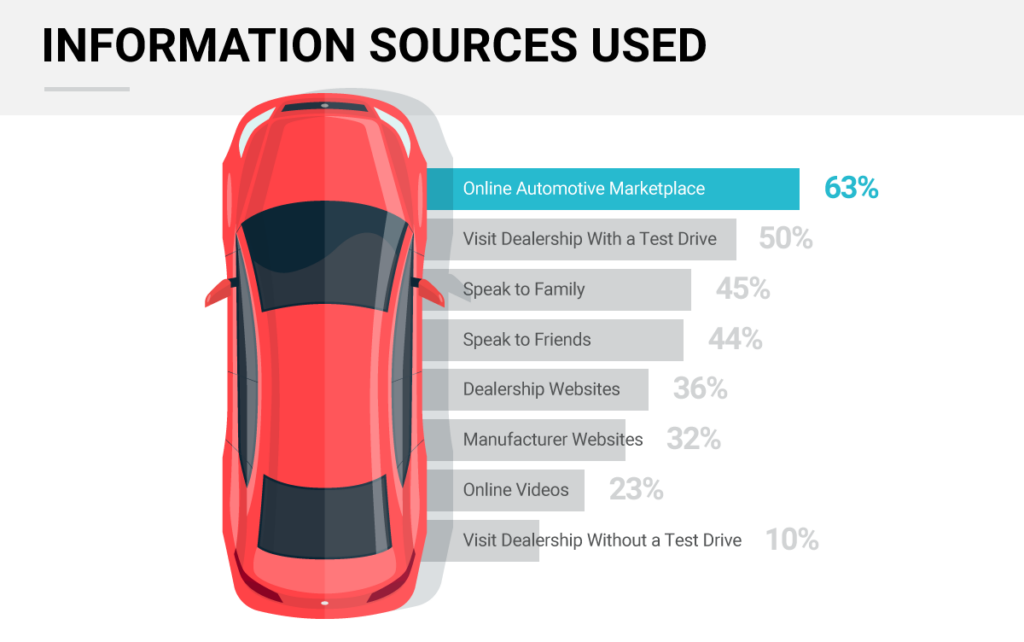
Among the criteria that plays a part in their purchase decision, price is the primary factor, at 71% for both buyer types. Fuel economy is also high up in the ranking order, coming in at 48% across both camps. Both cohorts are also neck and neck when considering brand (43%), availability (40%), and safety (34%), however, first-time buyers are far less concerned about vehicle comfort (31%), styling (28%), or available features (19%). Dealers are likely to be most successful in positioning price and ownership cost within their pitches to first-time owners, as opposed to overemphasizing the features available in the vehicle.
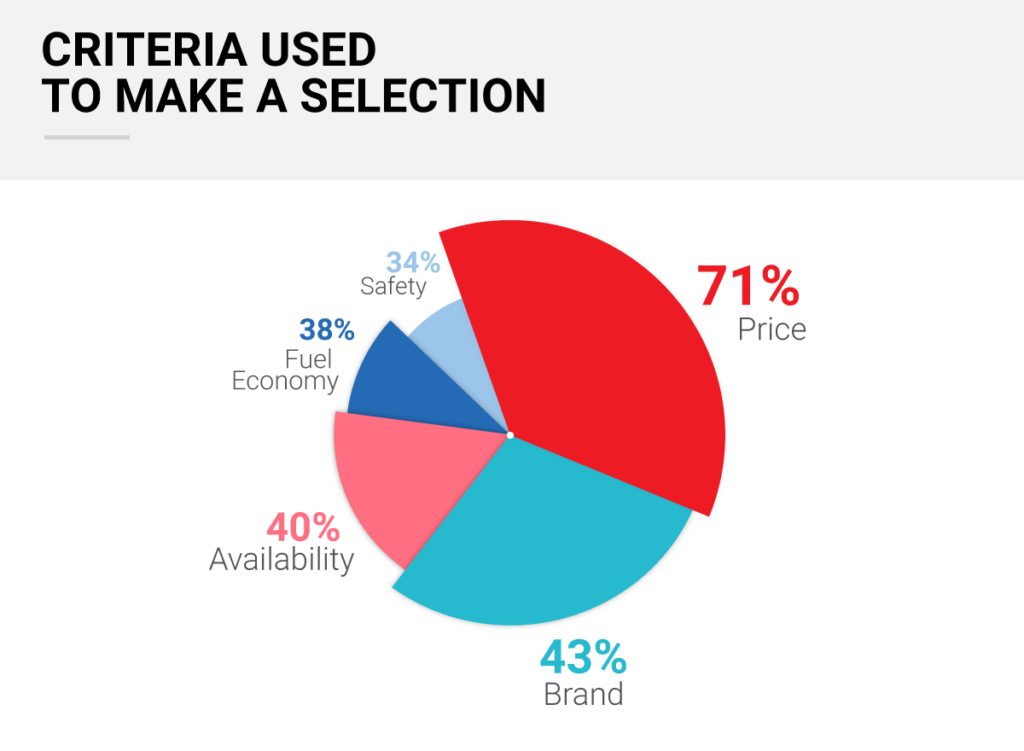
There are significant differences between these two groups in terms of how they initially become aware of the model they eventually purchase. Social media advertisement = is a key channel for 35% of first-time buyers, versus 23% of experienced ones.
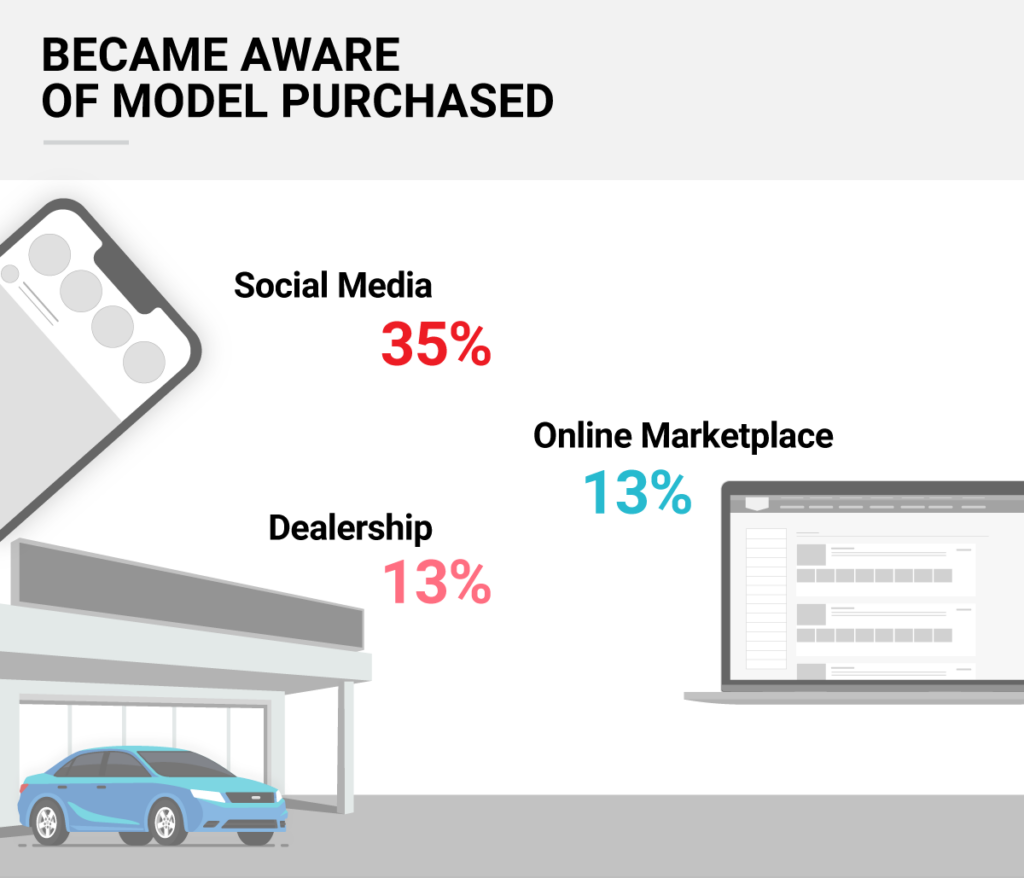
As they progress through the funnel, first-time buyers also find many of the lower stages increasingly difficult. Compared to experienced buyers, they are far more likely to struggle with feeling confident they got a fair deal. The first-time buyer sees nearly all aspects related to the purchase process a hurdle to overcome, including price comparison (59%), establishing a budget (52%), deciding on an extended warranty (51%), weighing insurance costs (50%), choosing a dealership (47%), selecting vehicle accessories (44%), identifying the most appropriate vehicle type (41%), deciding on buying or leasing (44%), and getting approval for financing (35%).
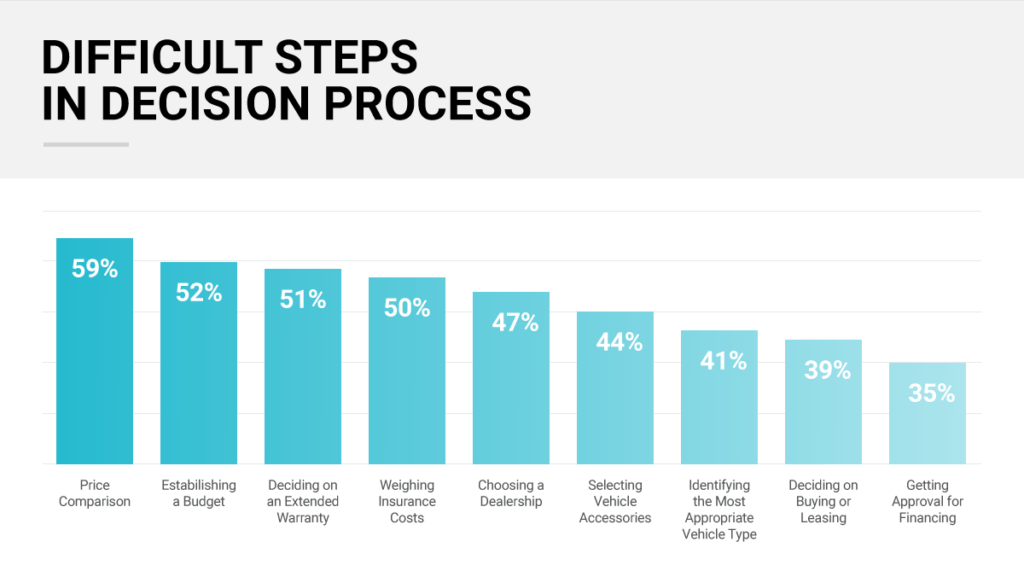
Where first-time buyers further distinguish themselves from those who have amassed experience with the process is their level of trust surrounding the accuracy of financing specifics conveyed to them by dealers. They are also more likely to make a down payment, which averages around $8,100.
To support first-time buyers as they progress through each stage of the car buying journey, dealers should concentrate their efforts in engaging these purchasers through the most appropriate channels, and once interest transitions from their online presence to bricks and mortar, demonstrate a heightened understanding of their unique preferences, the confines of their budgets, and providing the necessary handholding to successfully drive them over the finish line.
Key Takeaways
- First-time car buyers turn to online automotive marketplaces as their top information source, be sure you have your inventory front and centre
- First-time buyers will spend more time in their car buying journey, thus patience is imperative, however, they’re also more willing to put their trust in you
- Social advertising is the key channel where first-time car buyers become aware of the make and model of the vehicle purchased
- Most first-time buyers are younger, with lower incomes – invest the necessary time to understanding their budgets and help navigate them through the financing process
- Many young buyers are looking for basic transportation – present vehicle features as part of the value proposition, rather than a “wow factor”
- First-time buyers may see a challenge in researching a vehicle – advertise vehicles with as much information as possible, especially if they’re basic models, which often don’t have full specs alongside on a lot of sites
- First-time buyers want to test-drive vehicles, so make sure they can do so when they come in
Source: DIG Insights Vehicle Path to Purchase Research Study August 2022, n=1369.






